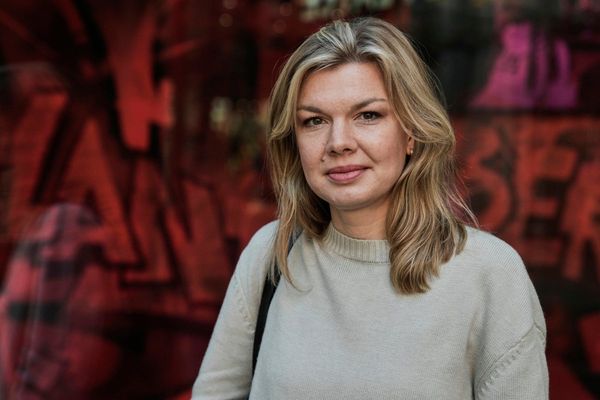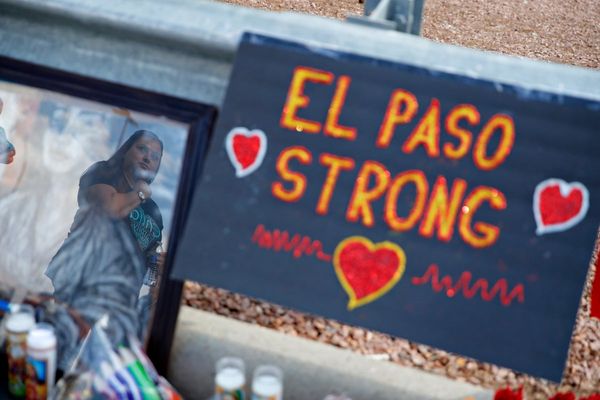
November brought some of the best news of the COVID-19 pandemic: strong evidence that novel coronavirus vaccines currently under development will work. That was never a forgone conclusion. But it is now almost certain that several different effective coronavirus vaccines will become available within the next few months.
Developing a vaccine is just the first step in a long journey toward ending the pandemic, however. Even more daunting tasks await policymakers and health workers after pharmaceutical companies ship the first doses out the door. To eliminate the risk of future outbreaks, as much as 70 percent of the world’s population will need to be immune to the coronavirus—through vaccination or infection and recovery. Given that only an estimated ten percent of the world’s population has had COVID-19 to date (with most infections concentrated in a relatively small number of countries), that leaves an extraordinarily high target for global vaccination efforts. Achieving this will take an astonishing feat of global cooperation, one that may prove more difficult and take much longer than most people realize.
Once it becomes clear that a vaccine won’t mean immediate deliverance from the crisis, there is a risk that popular disillusionment could set in, deepening the creeping skepticism of vaccines in parts of the world and adding to the already formidable challenge of immunizing more than half the global population. Governments must therefore guard against popular frustrations by communicating clearly and tempering expectations—all while pushing forcefully ahead with immunization campaigns to save as many lives as possible.
VACCINE HOARDERS
Several vaccines may be on the cusp of approval, but it will be a year at least until they are widely available in much of the world. High-income countries have already reserved the first nine billion or so doses of the leading vaccine candidates through direct bilateral deals with pharmaceutical companies. Fulfilling these orders will eat up the bulk of global vaccine production capacity for the next 12 months and possibly longer. An estimated 80 percent of the vaccine doses Pfizer and BioNTech expect to produce in 2021 are already reserved, for instance, as are 100 percent of the doses Moderna expects to produce.
Rich countries haven’t just pushed to the front of the line to secure preferential access for their populations. Many of them have hedged their bets by hoarding supplies of multiple vaccine candidates. Australia, Canada, Japan, the United States, and the countries of the European Union have reserved enough doses to vaccinate their entire populations several times over. It is possible that these countries will eventually decide to forgo their excess doses or donate them, but most will likely wait to do so until their own populations have been vaccinated.
Low-income countries will find themselves at the end of the queue, forced to rely on donor-financed mechanisms for their vaccines. The most promising such mechanism is COVAX, a multilateral initiative spearheaded by the Coalition for Epidemic Preparedness Initiatives, the Gavi Alliance, and the World Health Organization that aims to ensure equitable global access to coronavirus vaccines. With the exception of Russia and the United States, both of which have refused to participate, practically every developed country in the world has signed up with COVAX to support vaccine development efforts, and many have also agreed to help finance the distribution of vaccines to 92 low-income countries once they are approved. But COVAX still faces a multibillion dollar funding gap, and with so much of the world’s future vaccine supply and production capacity already monopolized by rich countries, there is only so much the initiative can do. Even if President-elect Joe Biden decides to reverse his predecessor’s position and throw the United States’ support behind COVAX, a best-case scenario would see only 20 percent of the population in low-income countries with access to vaccines by the end of 2021.
Low-income countries will find themselves at the end of the vaccine queue.
Just reaching that modest threshold will likely hinge on the approval of the AstraZeneca-Oxford vaccine, which uses a more established technology than the Pfizer-BioNTech and Moderna mRNA-based vaccines and will be easier to transport and store. Trial results announced last week indicated the vaccine was at least 62 percent effective and potentially higher depending on dosage. This may be lower than the roughly 95 percent efficacy reported by both Pfizer-BioNTech and Moderna, but it is still high enough to help bring the pandemic under control. And although the AstraZeneca trial results reported so far might jeopardize a quick FDA approval in the United States, regulators in the United Kingdom, the European Union, and elsewhere could soon authorize the vaccine, which would start to open doors for global distribution.
Of the pharmaceutical companies with candidates nearing the end of late-stage trials, AstraZeneca has made the greatest effort to ensure equitable supply of its vaccine throughout the world, even committing to provide doses at cost for the duration of the pandemic. Its approach will also enable it to scale up production more easily, since the materials, facilities, and expertise needed to produce its vaccine are in greater supply. AstraZeneca has already signed agreements with manufacturers in countries such as Brazil and India, and it expects to manufacture up to three billion doses—enough for 1.5 billion people—by the end of 2021, with half this amount reserved for distribution globally.
Vaccine shortages in the developing world could be eased somewhat if other pharmaceutical companies agree to price vaccines at or close to cost and expand production capacity by transferring technology to manufacturers in developing countries. China could also make up some of the shortfall through the export of its vaccines, as it has said it would like to do. But trials of Chinese candidates are still ongoing, and full evidence of their safety and efficacy has not yet been published. Even under the rosiest manufacturing and export scenarios, however, international demand for vaccines is likely to outstrip supply until at least 2022.
NOT YOUR STANDARD IMMUNIZATION DRIVE
Meeting the demand from poor countries is only half of the battle. These countries must then identify vaccine recipients, distribute doses widely and equitably, and address any hesitancy about immunization among the population. Our research on vaccine distribution in the United States suggests that all of these undertakings will be fraught with difficulty even in the richest country in the world. They will doubtlessly prove even more complex in developing countries.
Among the hardest decisions countries will have to make in the initial phase of distribution is who gets the first doses. While part of the answer to that question will depend on specific vaccine characteristics, experts generally agree that priority should go to the most vulnerable populations—primarily health-care workers, the elderly, and those with health conditions that put them at risk for severe COVID-19 and death. Still, translating this guidance into workable policies won’t necessarily be straightforward. Just to delineate these categories and design outreach programs based on them will take time and resources, especially in countries that don’t keep detailed records of demographics or health conditions. Existing vaccine distribution networks are designed to reach children and will be of only limited use in this case, as coronavirus vaccines will need to go to adults, at least initially.
Another difficulty will be ensuring equal access across geographic regions, income levels, and classes. Wealthy, urban, and politically connected populations are likely to have an easier time getting vaccinated than poor, rural, and marginalized ones. Correcting this imbalance will take additional time and resources. In other words, there is a tradeoff between ease and equity, and vaccinating on the cheap will result in unequal access. Including representatives of a broad range of communities and regions in the vaccine distribution process will help reduce political favoritism, neglect, and corruption. But all these issues are likely to hinder vaccination efforts, especially in countries where there is little accountability or transparency.
There is a tradeoff between ease and equity, and vaccinating on the cheap will result in unequal access.
The final hurdle will be convincing people to be immunized. In one recent survey of willingness to be vaccinated in 19 countries, including at least one country from every region of the world, just 71 percent of respondents overall said they would be very or somewhat likely to be vaccinated, with the greatest willingness in China (90 percent) and the lowest in Russia (55 percent). Another survey of 15 countries reported similar overall levels of vaccine acceptance, with European and North American populations lagging behind Asian and Latin American ones. Even more troubling, the survey showed that willingness to get vaccinated has diminished in recent months—from 59 percent to 54 percent in France, for instance, and from 72 percent to 64 percent in the United States.
Safety has frequently been a public concern with vaccines, especially new and unfamiliar ones. But anti-vaccine propaganda and misinformation, often distributed rapidly through social media, have compounded the difficulty of building trust in countries such as the United States, where vaccine development has become politicized. Because older adults will be a priority group for most early vaccination campaigns, rumors and misinformation will be a concern for all countries, not just the United States. There are sure to be a number of coincidental deaths following vaccination, and in the current social media ecosystem dangerous rumors can easily take off, potentially undermining trust. This happened recently in South Korea, where more than a dozen deaths falsely associated with influenza vaccines sparked a public scare. The risk of false associations will be even higher with a coronavirus vaccine, given its novelty and the attention that will be paid to immunization efforts everywhere.
THE DANGERS OF DISILLUSIONMENT
All these obstacles will hamper global efforts to immunize enough of the world’s population to stamp out the coronavirus. As a result, the risk of outbreaks will continue long after the first generation of vaccines is rolled out. Social-distancing measures, border controls, and other public health interventions will therefore have to remain in place for many months to come. It is possible that disillusionment will follow, especially as health inequities between and within countries will become more visible over time.
Such popular frustrations could deepen skepticism of vaccines and fuel more dangerous disinformation, compounding the challenges of administering global immunization programs. In other words, disillusionment risks creating a negative feedback loop that ends up prolonging the pandemic. As a result, governments must be careful to set realistic expectations around vaccination drives and to carefully calibrate their public messaging.
The imminent arrival of effective vaccines is good news, but it won’t mean an immediate end to the health crisis. With shortages likely to remain a reality in much of the world for at least a year and distribution challenges set to slow immunization efforts long after that, the world should be prepared for COVID-19 to linger for some time. More likely than a swift victory over COVID-19 is the beginning of an extended period of détente with the virus.







